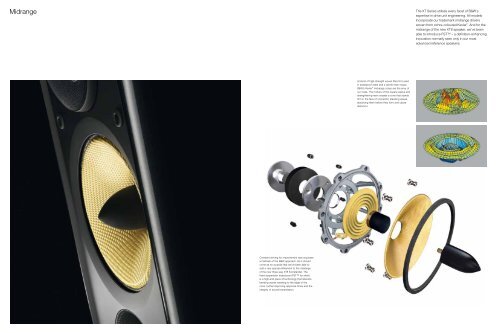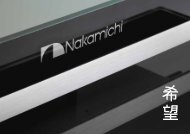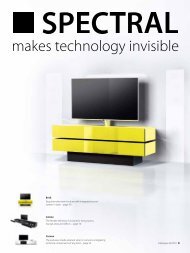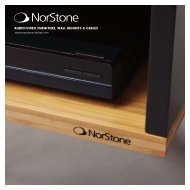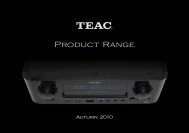You also want an ePaper? Increase the reach of your titles
YUMPU automatically turns print PDFs into web optimized ePapers that Google loves.
The magic of metal<br />
B&W Head of Research Gary Geaves explains<br />
the special appeal of aluminium for speaker<br />
cabinet designers.<br />
Could you give us some insight into how<br />
different it is working with aluminium<br />
speaker cabinets from wooden ones?<br />
Take an instrument like a flute. You can have<br />
wooden ones and metal ones. They sound<br />
different to some degree, but there's no mistaking<br />
they are both flutes. Moreover, you don't try to<br />
make a metal instrument sound exactly like the<br />
wooden version and vice versa. What you do is<br />
to make the very best of both platforms.<br />
But surely there's a difference between<br />
musical instruments as sound producers<br />
and speakers as sound reproducers?<br />
Shouldn't speakers be completely neutral?<br />
Whatever the material, we always try to minimise<br />
any effect the cabinet might have on timbre by<br />
bracing and damping, and in the way we mount<br />
the drivers. Even so, there will inevitably be a small<br />
signature – but neither material is intrinsically<br />
better than the other.<br />
What I always try to do is to optimise whatever<br />
platform I am working with. There are bigger<br />
factors contributing to the overall listening<br />
experience than the relatively small differences<br />
in timbre we are talking about here.<br />
Such as?<br />
I'm thinking of those characteristics that are<br />
difficult to describe by figures and graphs.<br />
The differences you don't find in any written<br />
specification. Imaging, a sense of space, dynamic<br />
impact – things like that.<br />
Has working with aluminium helped with any<br />
of these?<br />
Absolutely! One of the big contributors to good<br />
imaging is how the sound disperses from the<br />
speaker into the room. Cabinet geometry has a<br />
lot to do with that. You need the right balance<br />
between direct and reflected sound to get a<br />
smooth continuum of sound from left to right. If<br />
you don't, there's too much concentration around<br />
the speakers themselves and the centre point<br />
between them. The thin wall of the aluminium<br />
extrusions allows us to make the cabinet narrower<br />
for the same internal volume and this widens the<br />
dispersion. The imaging from these speakers is<br />
truly amazing.<br />
Don’t thinner cabinet walls make for weaker<br />
cabinets and more vibration?<br />
It might if we were dealing with simple flat panels,<br />
as we normally do with wooden cabinets. But<br />
aluminium is stiffer than wood, and this stiffness is<br />
further increased by the curved profile and internal<br />
bracing. We’ve also been able to mount the drivers<br />
in such a way that they induce no vibrations in<br />
the cabinet walls. Altogether it adds up to a very<br />
strong, stable cabinet.


